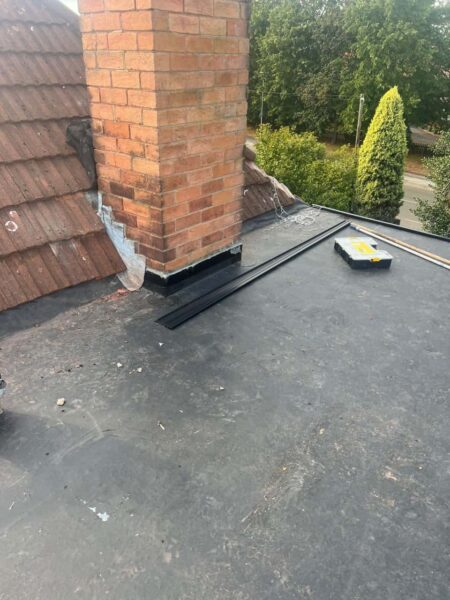Common Flat Roof Problems and How to Fix Them
Introduction: Flat roofs, while popular for their sleek and modern appearance, are challenging. They require regular maintenance and timely repairs to ensure longevity and effectiveness. At WBN Roofing Rossington, we understand the intricacies of flat roofing and are here to help you navigate common problems and their solutions. In this blog post, we’ll explore some of the most frequent issues faced with flat roofs and offer practical advice on addressing them.
1. Pooling Water
Problem: One of the most common issues with flat roofs is water pooling. Due to their minimal slope, water can accumulate rather than drain away efficiently, leading to leaks, structural damage, and even accelerated deterioration of roofing materials.
Solution: To address pooling water, ensure that your roof has a proper drainage system. Regularly check and clear gutters, downspouts, and drainage outlets to prevent blockages. If pooling persists, you may need to adjust the roof’s slope or add additional drainage solutions such as internal drains or scuppers.
2. Leaks and Water Damage
Problem: Leaks are a serious concern for flat roofs, often resulting from damaged membranes, faulty seams, or poor installation. Leaks can cause water damage to the interior of your property, leading to mould growth and structural issues.
Solution: Regularly inspect your flat roof for signs of damage or wear. Look for cracks, blisters, or punctures in the roofing material. If you identify a leak, it’s crucial to address it promptly. For minor repairs, you can use a roofing sealant or patch kit. For more significant issues, consult a professional roofer to assess and repair the damaged areas.
3. Blistering
Problem: Blistering occurs when air or moisture becomes trapped between layers of roofing material, causing bubbles or blisters to form on the surface. This can weaken the roof and potentially lead to leaks.
Solution: Blistering can be mitigated by ensuring proper roof space ventilation. During installation, ensure that the roofing material is applied correctly and that any trapped air or moisture is removed. If blistering has already occurred, consult a roofing professional to determine the best action for repairing or replacing the affected areas.
4. Cracked or Damaged Flashing
Problem: Flashing seals joints and edges on flat roofs, such as around chimneys and vents. Over time, flashing can become damaged or cracked, leading to potential leaks and water ingress.
Solution:
- Regularly inspect flashing for signs of damage or deterioration.
- Replace or repair any damaged flashing as soon as possible to prevent leaks.
- Ensure that new flashing is properly sealed and installed to maintain its effectiveness.
5. Punctures and Tears
Problem: Falling debris, foot traffic, or sharp objects can cause punctures or tears in the roofing material. These breaches can allow water to penetrate the roof and cause damage.
Solution: Address punctures or tears immediately using a roofing patch or sealant. For larger holes or significant damage, consult a professional roofer to ensure a proper repair. Regular inspections can help identify potential hazards and prevent damage before it becomes a problem.
6. Poor Installation
Problem: Flat roofs are susceptible to issues arising from poor installation practices. Improper application of roofing materials, inadequate sealing, or incorrect drainage can lead to various problems.
Solution: Always hire a qualified and experienced roofing contractor to avoid issues related to poor installation. Ensure that the contractor follows best practices and uses high-quality materials. If you suspect your flat roof has installation problems, have it assessed by a professional to determine the necessary corrective actions.
7. Granule Loss
Problem: Granule loss occurs when the asphalt-based roofing materials’ protective granules on the surface begin to wear away. This can reduce the roof’s effectiveness and lead to further damage.
Solution: Regular maintenance is key to preventing granule loss. Ensure that your roof is cleaned and inspected periodically. If granule loss is significant, consider having your roof resurfaced or replaced with a more durable material.
8. Condensation Issues
Problem: Condensation can build up on the underside of flat roofs, especially in poorly ventilated spaces. This can lead to moisture damage and mould growth.
Solution: Improve ventilation in the roof space to reduce condensation. Install vents or fans to ensure adequate airflow. Additionally, vapour barriers should be used during installation to prevent moisture from penetrating the roof structure.
Conclusion: Flat roofs offer a modern and functional roofing solution but require regular attention to avoid common problems. By understanding these issues and implementing effective solutions, you can ensure the longevity and performance of your flat roof.
Call us on: 01302 490 892
Click here to find out more about WBN Roofing Rossington
Click here to complete our contact form and see how we can help you with your roofing needs.

